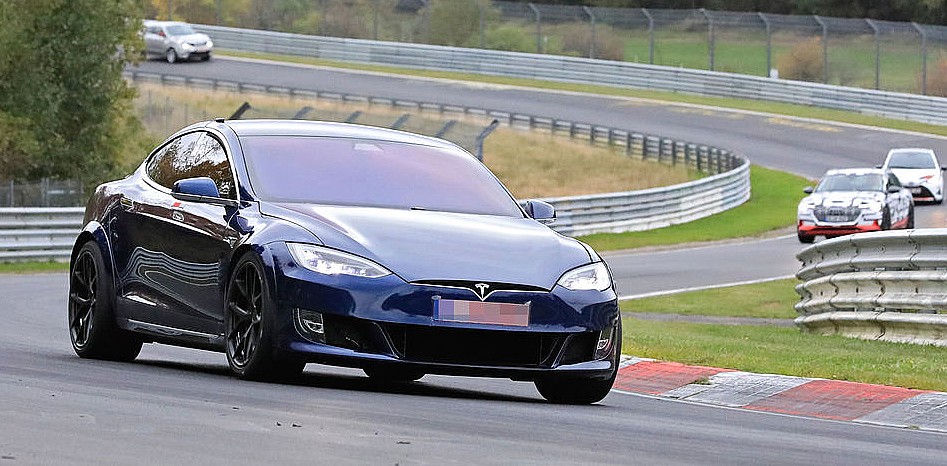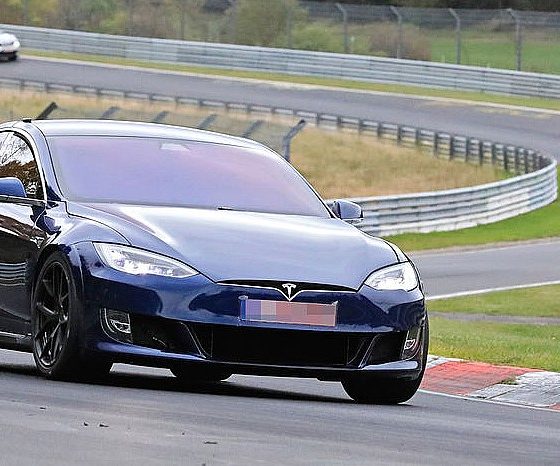

News
Tesla's historic decade makes it the auto industry's best performer–and it's not even close
Tesla’s (NASDAQ:TSLA) performance in the stock market has surprised many people. Very few analysts expected a small electric car startup based out of Palo Alto, California to become the highest performing automaker in terms of growth, total return, and shareholder value over the past decade.
Investors who have stuck with Tesla since the electric car maker went public in 2010 have seen their investments rise over 1,100%. Data compiled by Bloomberg showed that the auto industry, in general, has appreciated 158% over the past 10 years.
While Musk is seen as one of the most ridiculed automotive CEOs in the business, his company’s performance speaks for itself. After he was forced by the Securities and Exchange Commission (SEC) to pay a $20 million fine (on top of another $20 million that Tesla had to pay) for a tweet that allegedly “misled stockholders,” he still inspired confidence among Tesla’s investors. This seemed to have paid off for the company’s supporters, as TSLA recently had its shares spike to over $420 apiece.
Tesla’s sharp and consistent growth has given the company a ranking as the third-most valuable car manufacturer in the world with a $78 billion valuation. This figure trails only Volkswagen ($98 billion) and Toyota ($230 billion) among 38 total manufacturers in the world. Tesla is over 30% more valuable than General Motors and over twice as valued as the Ford Motor Company.
The company has also successfully outperformed some of the biggest and most consistent car manufacturers in the world in terms of sales. The Model 3 sedan has become the most popular vehicle in the United States’ luxury segment, beating veterans from Japan and Germany. Since the Model S first went on sale in 2012, Tesla has also seen its sales grow 52x (5200%) while the rest of the automotive sector has only seen a 46% growth.
In the past six months, TSLA shares saw a rise of 85%. This is so drastic that the company would have been the best performer in the S&P 500 if it was included in the esteemed list. This also allowed Tesla to be the top company among 38 of its peers that are listed in the Bloomberg Intelligence Global Automobile Index.
Despite the undeniable growth from the company, there are still analysts on Wall Street who believe Tesla’s growth is unimpressive and not worth mentioning. Kynikos Associates’ Jim Chanos stated that the electric car maker is still “one of our biggest and our best short positions.” Notorious Tesla short David Einhorn has insisted that the “wheels are falling off” of Tesla.
These shorts continue to believe this despite more than $2 billion worth of losses, particularly as the company has been in a rally since breaking the $400 mark in mid-December. That being said, some shorts have been leaving due to the damages they sustained, causing short-selling to drop around 9.2%, according to Bloomberg Opinion.
Tesla’s continuing growth is undeniable and forecasts suggest the company is not even close to finished. Bloomberg analysts suggest 14% more growth by the end of the year, 21% in 2020 and 18% in 2021. This is compared to an estimated 1%, 4%, and 3% growth for legacy automakers in the same time period.
The growth of the electric car market as a whole this decade is notable, to begin with, but Tesla seems to be responsible for the majority of this. With the carmaker now beginning to produce more than just fast and technologically advanced sedans, it seems another decade of growth is in the cards for the company.

News
Tesla starts showing how FSD will change lives in Europe
Local officials tested the system on narrow country roads and were impressed by FSD’s smooth, human-like driving, with some calling the service a game-changer for everyday life in areas that are far from urban centers.

Tesla has launched Europe’s first public shuttle service using Full Self-Driving (Supervised) in the rural Eifelkreis Bitburg-Prüm region of Germany, demonstrating how the technology can restore independence and mobility for people who struggle with limited transport options.
Local officials tested the system on narrow country roads and were impressed by FSD’s smooth, human-like driving, with some calling the service a game-changer for everyday life in areas that are far from urban centers.
Officials see real impact on rural residents
Arzfeld Mayor Johannes Kuhl and District Administrator Andreas Kruppert personally tested the Tesla shuttle service. This allowed them to see just how well FSD navigated winding lanes and rural roads confidently. Kruppert said, “Autonomous driving sounds like science fiction to many, but we simply see here that it works totally well in rural regions too.” Kuhl, for his part, also noted that FSD “feels like a very experienced driver.”
The pilot complements the area’s “Citizen Bus” program, which provides on-demand rides for elderly residents who can no longer drive themselves. Tesla Europe shared a video of a demonstration of the service, highlighting how FSD gives people their freedom back, even in places where public transport is not as prevalent.
What the Ministry for Economic Affairs and Transport says
Rhineland-Palatinate’s Minister Daniela Schmitt supported the project, praising the collaboration that made this “first of its kind in Europe” possible. As per the ministry, the rural rollout for the service shows FSD’s potential beyond major cities, and it delivers tangible benefits like grocery runs, doctor visits, and social connections for isolated residents.
“Reliable and flexible mobility is especially vital in rural areas. With the launch of a shuttle service using self-driving vehicles (FSD supervised) by Tesla in the Eifelkreis Bitburg-Prüm, an innovative pilot project is now getting underway that complements local community bus services. It is the first project of its kind in Europe.
“The result is a real gain for rural mobility: greater accessibility, more flexibility and tangible benefits for everyday life. A strong signal for innovation, cooperation and future-oriented mobility beyond urban centers,” the ministry wrote in a LinkedIn post.
News
Tesla China quietly posts Robotaxi-related job listing
Tesla China is currently seeking a Low Voltage Electrical Engineer to work on circuit board design for the company’s autonomous vehicles.

Tesla has posted a new job listing in Shanghai explicitly tied to its Robotaxi program, fueling speculation that the company is preparing to launch its dedicated autonomous ride-hailing service in China.
As noted in the listing, Tesla China is currently seeking a Low Voltage Electrical Engineer to work on circuit board design for the company’s autonomous vehicles.
Robotaxi-specific role
The listing, which was shared on social media platform X by industry watcher @tslaming, suggested that Tesla China is looking to fill the role urgently. The job listing itself specifically mentions that the person hired for the role will be working on the Low Voltage Hardware team, which would design the circuit boards that would serve as the nervous system of the Robotaxi.
Key tasks for the role, as indicated in the job listing, include collaboration with PCB layout, firmware, mechanical, program management, and validation teams, among other responsibilities. The role is based in Shanghai.
China Robotaxi launch
China represents a massive potential market for robotaxis, with its dense urban centers and supportive policies in select cities. Tesla has limited permission to roll out FSD in the country, though despite this, its vehicles have been hailed as among the best in the market when it comes to autonomous features. So far, at least, it appears that China supports Tesla’s FSD and Robotaxi rollout.
This was hinted at in November, when Tesla brought the Cybercab to the 8th China International Import Expo (CIIE) in Shanghai, marking the first time that the autonomous two-seater was brought to the Asia-Pacific region. The vehicle, despite not having a release date in China, received a significant amount of interest among the event’s attendees.
Elon Musk
Elon Musk and Tesla AI Director share insights after empty driver seat Robotaxi rides
The executives’ unoccupied tests hint at the rapid progress of Tesla’s unsupervised Robotaxi efforts.

Tesla CEO Elon Musk and AI Director Ashok Elluswamy celebrated Christmas Eve by sharing personal experiences with Robotaxi vehicles that had no safety monitor or occupant in the driver’s seat. Musk described the system’s “perfect driving” around Austin, while Elluswamy posted video from the back seat, calling it “an amazing experience.”
The executives’ unoccupied tests hint at the rapid progress of Tesla’s unsupervised Robotaxi efforts.
Elon and Ashok’s firsthand Robotaxi insights
Prior to Musk and the Tesla AI Director’s posts, sightings of unmanned Teslas navigating public roads were widely shared on social media. One such vehicle was spotted in Austin, Texas, which Elon Musk acknowleged by stating that “Testing is underway with no occupants in the car.”
Based on his Christmas Eve post, Musk seemed to have tested an unmanned Tesla himself. “A Tesla with no safety monitor in the car and me sitting in the passenger seat took me all around Austin on Sunday with perfect driving,” Musk wrote in his post.
Elluswamy responded with a 2-minute video showing himself in the rear of an unmanned Tesla. The video featured the vehicle’s empty front seats, as well as its smooth handling through real-world traffic. He captioned his video with the words, “It’s an amazing experience!”
Towards Unsupervised operations
During an xAI Hackathon earlier this month, Elon Musk mentioned that Tesla owed be removing Safety Monitors from its Robotaxis in Austin in just three weeks. “Unsupervised is pretty much solved at this point. So there will be Tesla Robotaxis operating in Austin with no one in them. Not even anyone in the passenger seat in about three weeks,” he said. Musk echoed similar estimates at the 2025 Annual Shareholder Meeting and the Q3 2025 earnings call.
Considering the insights that were posted Musk and Elluswamy, it does appear that Tesla is working hard towards operating its Robotaxis with no safety monitors. This is quite impressive considering that the service was launched just earlier this year.








